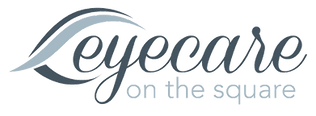Diagnostic Equipment in Cincinnati, OH
Diagnostic Equipment
Diagnostic equipment is fundamental in the medical sector, facilitating accurate evaluations and diagnoses of various health conditions. In the realm of eye care, these advanced tools enable professionals to delve deep into ocular health, ensuring that patients receive the best care possible. With the advancement of technology, the capabilities of diagnostic equipment expand, offering more comprehensive and precise assessments, ultimately leading to better patient outcomes.
Diagnostic Equipment
Lipiscan
The lipiscan is a camera to capture a picture of your meibomian glands. The meibomian glands are the oil glands in your eyelids that make the oil portion of the tears. This part of the eye accounts for at least 85% of all dry eye disease! We started incorporating this imaging on every yearly exam for patients 18 and over. This is because we realized that you can begin to have permanent anatomy changes before you ever have symptoms of dry eye. We want to catch you as early on in the dry eye disease state as possible to have the best outcomes!
Oculus
The oculus is a multifunction camera to give us details on what is causing your dry eye disease. It gives us a redness scale, videos your blinking function, images your oil, measures how quickly your tears evaporate, and much more! This machine helps us create a very personalized approach to your specific disease path to avoid unnecessary steps.
Optos Daytona
The Optos Daytona provides an ultra-widefield picture of your retina without dilating drops. If we find something unique in your retina or with your optic nerve, we can also use this camera to take a picture and monitor for changes over time. One great feature to having pictures of your retina is that it is an objective view of your eye. It is a picture you can carry forward to all of your future eye exams!
Optical Coherence Tomography (OCT)
The OCT is a non-invasive camera that lets us look at the structure of the layers of your retina and thickness of your optic nerves. We use this testing for conditions such as glaucoma, macular degeneration, and diabetic retinopathy. Your primary care doctor may also want users to use this on you if you are on certain high-risk medications since these can change your vision. This very cool technology is also used by NASA for space exploration!
Virtual Visual Field
Virtual Visual Field is a cutting-edge diagnostic service offered by Eyecare on the Square in Cincinnati, OH. This innovative procedure maps the visual fields of the eye to detect blind spots and other vision irregularities. Utilizing advanced technology, it is capable of assessing areas of the eye such as the retina and optic nerve, making it invaluable for individuals with glaucoma, macular degeneration, or other eye conditions. Most patients observe their diagnostic results immediately after the test, providing a swift understanding of their ocular health. For a clearer vision of your eye health, schedule your Virtual Visual Field appointment with Eyecare on the Square today.
Neurolens
Your brain constantly coordinates with your eyes. It keeps them aligned and in sync, enabling you to see the world around you without having double vision. So if your eyes are misaligned, you will struggle to maintain balance, causing you to experience headaches, dizziness, migraines, neck stiffness and tension in and around your eyes. These symptoms are often compounded by your exposure to computer screens, smartphones, and other digital devices, making everyday life difficult.
Thanks to neurolens®, you can correct misalignment and have the most comfortable vision possible. In this post, eye care and contact lenses provider Lumen Optometric shares more information about neurolenses®.
Eye Exam Today
